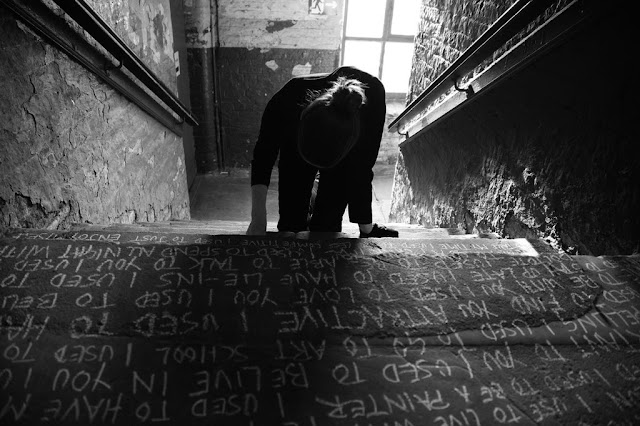7th December - 24th January at Summerhall , Edinburgh
Launch (open to public) 7pm, Friday 6th December, 2013
Venue: Summerhall, Edinburgh, 1 Summerhall, Edinburgh, EH9 1PL
Entry: Free

I'll be up in Edinburgh this Friday for the preview of the latest manifestation of Phil Davenport's "The Dark Would" Project. Significant poets and text artists involved in the two versions of the seminal anthology exhibiting works that cross the boundary of living and dying in The Dark Would: Fiona Banner, Richard Long, Simon Patterson, Susan Hiller, Sarah Sanders, Jenny Holzer, Richard Wentworth, Caroline Bergvall, Erica Baum, Ron Silliman and many others, including (perhaps with less significance) me. Unexpectedly Phil has included my small 2005 poetic homage to Blinky Palermo. Funnily enough when he mentioned his intention I had to take a moment to remember that I had done it but then again it was one of my first published pieces (with the kind support of Greville Worthington coming out as a limited edition).
The Dark Would uses notions of mortality to collapse old, dead categories (‘Conceptual Art’, ‘Concrete Poetry’, ‘Vispo’ etc.) repositioning artists alongside poets and outsiders, and freeing space for a new wave of practitioners.
Summerhall and its Curator Paul Robertson are proud to host the world premiere ‘The Dark Would’ as part of its Winter Visual Arts Programme of this ground-breaking exhibition.
New work has been made especially for the show by Richard Wentworth and commissioned pieces include rorschach drawings by Mike Chavez-Dawson, made from the names of dead poets and live writing by Sarah Sanders. The Dark Would will also have 'answering' works by dead artists and poets including Stephane Mallarme, Ian Hamilton Finlay and Joseph Beuys, taken from Paul Robertson's Heart Fine Art collection which is based at Summerhall. For more information on Heart Fine Art: http://www.heartfineart.com
(Exhibition contributors: arthur+martha, Fiona Banner, Erica Baum, Caroline Bergvall, Mike Chavez-Dawson, Maria Chevska, Matt Dalby, Philip Davenport, Steve Emmerson, Alec Finlay, Rob Fitterman, Steve Giasson, Susan Hiller, Jenny Holzer, Marton Koppany, Laurence Lane, Richard Long, Tony Lopez, Darren Marsh, Simon Patterson, Tom Phillips, Sarah Sanders, Ron Silliman, Carolyn Thompson, Carol Watts, Lawrence Weiner and Richard Wentworth.)















